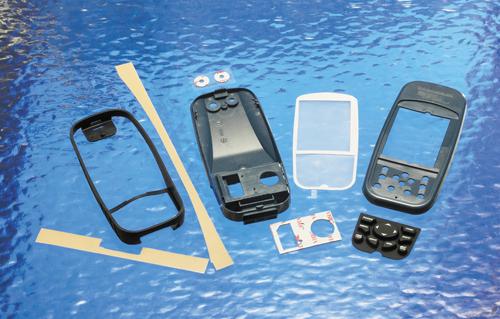August 8, 2013

Conductive adhesive technology has long been a key technology for the electronics and electrical industries. Electrically conductive adhesives (ECAs) are attractive because they provide a clean, safe, and simple solution to a wide range of applications, including electrical interconnection and assembly for electronics, EMI/RFI shielding and grounding, and static dissipation and control.
In industrial applications, including automotive ones, new formulations of ECAs provide high flexibility and excellent conductivity for use where electronic components (like sensors) and dissimilar materials are found -- plastic, composite, metal, and glass.
ECA basics
Epoxies, acrylics, urethanes, and other polymers are the building blocks for conductive adhesives. Polymers have excellent dielectric properties for insulation. Therefore, every conductive adhesive needs conductive fillers added. Silver is the most popular filler, though recently, its rising cost and the propensity for silver to migrate within the adhesive have encouraged researchers to look at other options. Substitutes include nickel, copper, tin, and carbon-based materials (like graphite). There is considerable research being conducted on using nanoparticles in ECAs to handle ultra-fine-pitch circuits and enhance electrical properties.

Each of the fillers has its pros and cons. For example, copper is vulnerable to oxygen and corrosion, and its oxide form is a poor conductor. Specific formulations must be carefully selected based on the requirements of the applications.
ECAs can be isotropic or anisotropic. Isotropic ECAs conduct electricity equally in all directions. Sometimes called polymer solder, they are composed of polymer resin and conductive fillers. This type of adhesive has typically been silver filled and used for die attachment and some component assembly.
Anisotropic ECAs are available in a number of forms, from pastes to die-cut films. They can be unidirectional or bidirectional, conducting electricity in one or two directions. Anisotropic adhesives can use a random dispersion of conductive particles or employ a patterned approach. The majority of anisotropic ECAs are dry films with top release protective films and release liners. They can be die cut to suit the application. In addition, anisotropic ECAs can be developed as pressure-sensitive tapes (PSAs) for cost-effective production and ease of use.
Thermoplastic or thermoset
ECAs can be either thermoplastic or thermoset adhesives. Thermoplastic adhesives provide fast curing and easy rework. Heat activates a change in the physical state from a solid to a flowable state. Because they can remelt, thermoplastics are limited from applications where high temperatures are used. In addition, they have a tendency to flow under the application of force, exhibiting cold flow or creep. Thermoplastics also tend to form weaker bonds.
Thermosets undergo true chemical reaction to form bonds -- a process that might take minutes or hours. They have a limited shelf life for materials that must be catalyzed before use. Cross-linked thermosets are mechanically stable, form solid bonds, and resist deformation. They provide better wetting out of surfaces for stronger bonds.
Thermoplastics have provided strong cost-effective bonds for die attachment for years, but thermosets are now finding use in fine-pitch applications -- industrial electronics, LCD, and flexible circuit interconnections -- and in touchscreens as transparent conductors for capacitive touch applications.
About the Author(s)
You May Also Like





